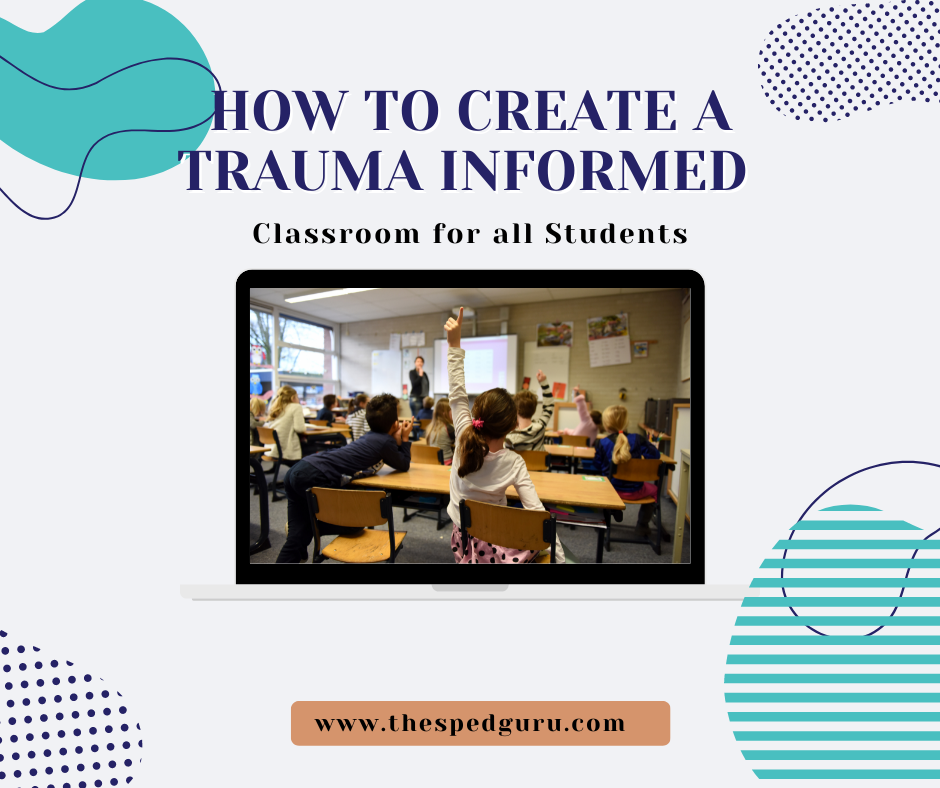Creating a trauma sensitive classroom is essential for supporting the emotional well-being and learning of students who may have experienced trauma.
Here are some steps to help you create a trauma sensitive classroom environment:
- Educate Yourself: Learn about the effects of trauma on the brain and behavior. Understand that trauma can manifest in various ways, such as anxiety, withdrawal, hyperactivity, or aggression. This knowledge will help you recognize and respond to students’ needs effectively.
- Build Strong Relationships: Foster a sense of safety and trust by building positive relationships with your students. Greet them warmly, listen actively, and show empathy. Make an effort to connect with each student individually and create a supportive community within the classroom.
- Establish Clear Expectations: Set clear and consistent expectations for behavior and academics. Communicate classroom rules, routines, and consequences, so students know what to expect and feel more secure in the environment.
- Create a Safe Physical Space: Arrange the classroom in a way that minimizes potential triggers and promotes a sense of safety. Provide cozy corners or quiet spaces where students can retreat if they need a break. Avoid overly stimulating environments.
- Use Trauma-Informed Language: Be mindful of the language you use. Avoid harsh or punitive language and instead use positive, encouraging words. Use “I” statements when addressing behavior to avoid blaming or shaming students.
- Practice Flexibility: Recognize that students who have experienced trauma may have different needs and triggers. Be flexible in your teaching methods, assignments, and expectations. Allow for alternative ways of completing tasks or assessments.
- Emphasize Predictability: Maintain a consistent daily schedule and routine. This helps students feel a sense of predictability and control, which can be comforting for those who have experienced trauma.
- Offer Choices: Give students choices whenever possible. This empowers them and gives them a sense of agency, which can be particularly important for individuals who have experienced trauma and may have felt powerless.
- Provide Emotional Regulation Strategies: Teach students practical techniques for managing their emotions, such as deep breathing exercises, mindfulness, or journaling. These tools can help them self-regulate when they are feeling overwhelmed.
- Incorporate Self-Care: Encourage self-care practices among your students. Discuss the importance of healthy habits like getting enough sleep, eating well, and engaging in physical activity to support their overall well-being.
- Offer Alternative Assessments: Recognize that traditional assessment methods may not be suitable for all students. Provide alternative ways for students to demonstrate their understanding, such as presentations, projects, or creative assignments.
- Collaborate with Support Staff: Work closely with school counselors, social workers, and other support staff to identify students who may need additional assistance. Collaborate on strategies to provide the necessary support within the classroom.
- Provide Resources: Keep a list of external resources available for students who need extra support, such as counseling services, crisis hotlines, or community organizations.
- Model Healthy Coping: Be a role model for healthy coping mechanisms. Share your own experiences with stress and strategies such as yoga that you use to manage it. This can help normalize seeking help and using positive coping skills or.
Remember, creating a trauma-sensitive classroom is an ongoing process that requires sensitivity, patience, and continuous self-reflection. Each student’s needs are unique, so adapt your approach as needed and prioritize their well-being above all else.
What does a Trauma Sensitive classroom look like?
Trauma can have a profound effect on a scholar’s ability to research and thrive. Luckily, by developing a trauma sensitive school classroom, educators can foster a secure and supportive environment in which each toddler feels empowered to reach their complete ability.
What is a Trauma Sensitive Classroom?
A trauma-knowledgeable school room recognizes that many school and college students have skilled trauma in their lives, whether or not without delay or in a roundabout way. This consciousness shapes how educators technique coaching, growing an area that prioritizes:
- Safety and predictability: Clear routines, regular expectations, and open communique assist school and college students in experiencing steady and control.
- Positive relationships: Trusting bonds with instructors and peers offer critical help and foster an experience of belonging.
- Self-regulation: Teaching coping capabilities like mindfulness and deep respiration empowers school and college students to control their feelings and reactions.
- Empowerment and desire: Providing opportunities for preference and management within the lecture room builds self-belief and business enterprise.
- Open conversation: Creating a secure area for students to explicit themselves and search for help without fear of judgment is important.
Creating a Trauma Sensitive Classroom: A Checklist
While each study room is particular, here are a few key principles to maintain in thought:
Physical Environment:
- Create relaxing surroundings: Use soft lighting, natural elements, and comfortable seating.
- Offer sensory tools: Fidget toys, calming objects, and noise-canceling headphones can help students manage sensory input.
- Clearly outline non-public space: Respect obstacles and create specific quiet regions for character desires.
Instructional Practices:
- Use trauma-informed coaching: Offer a couple of pathways to mastering and accommodate exclusive studying styles.
- Integrate social-emotional learning (SEL): Teach coping talents, mindfulness practices, and superb self-talk.
- Practice restorative justice: Address conflicts with empathy and awareness on repairing harm as opposed to punishment.
- Celebrate diversity and inclusion: Create a study room in which everybody feels valued and revered.
Communication and Relationships:
- Build trusting relationships: Get to recognize students personally and concentrate actively on their issues.
- Use language mindfully: Avoid triggering language and assumptions, and consciousness of strengths and high-quality affirmations.
- Practice cultural sensitivity: Understand and appreciate school and college students’ numerous backgrounds and experiences.
- Partner with families and aid networks: Collaborate with parents, guardians, and different experts to offer holistic support.

